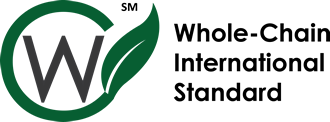
Author: Navdeep Singh
Traceability is an indispensable function in agriculture that extends beyond the simplicity of tracking and tracing products. For instance, the 2020 U.S. Onion Salmonella Outbreak resulted in approximately 1127 Salmonella cases in the United States and Canada, which resulted in widespread recalls and revealed deficiencies in supply chain tracking (Administration, 2021). In the same vein, the 2018 Australian Strawberry Needle Scare, which culminated in the discovery of needles concealed within strawberries, resulted in widespread recalls, export restrictions, and consumer anxiety (BBC, 2018). The 2019 Romaine Lettuce E. Coli Outbreak in the United States resulted in a nationwide advisory against the consumption of romaine lettuce and affected more than 200 individuals (USFDA, 2019).
In each of these instances, the inability to promptly identify the contaminated produce led to a loss of consumer trust, additional complications, and widespread confusion. The hundreds of comparable incidents that go unreported highlight the critical need for reliable traceability in agriculture.
Consumers should be informed about the origin of food. Transparent information regarding the origins of food fosters trust and safeguards consumers from significant issues such as mislabeling, health risks, and economic losses, particularly when inferior products are misrepresented as premium items. It is imperative to maintain consumer awareness to safeguard those who prioritize profit over integrity.
Blockchain and Digital Traceability Impact in the Agri-food Industry
The concept of traceability in agri-food, also referred to as the ‘one step back, one step forward’ principle, is the capacity to obtain comprehensive information regarding the origin, processing, distribution, and sale of food products, as well as any intermediate steps in their transit. Traceability enhances the quality and safety of food by providing consumers with authentic and reliable products (Konstantinos Demestichas, 2020).
Digital traceability is the term used to describe the process of utilizing new digital technologies to track agricultural products. The concept remains consistent; however, technologies such as information and communication technology (ICT), the Internet of Things (IoT), blockchain technology, big data, cloud and edge computing, and artificial intelligence (AI) are employed to analyze patterns and provide insights for the purpose of optimizing supply chain efficiency, predicting potential disruptions, and ensuring that products meet quality standards. In conjunction, these technologies establish a digital traceability system that is both dependable and seamless, thereby improving transparency, safety, and efficiency throughout the agricultural supply chain (Sylvain Charlebois, 2024). It is advantageous for both producers and consumers.
By utilizing blockchain technology to monitor and record each stage of a product’s journey through the supply chain, Blockchain Traceability enhances traditional traceability. Blockchain technology, which offers a number of advantages including security, transparency, traceability, and interoperability, provides a shared, secure, distributed, and permissioned database of transactions. This method guarantees that each transaction and movement is securely recorded in a decentralized, immutable ledger, thereby increasing transparency and trust among all stakeholders (Yi Zheng, 2023).
Distinction from Traditional Traceability
Ecentralization
Blockchain operates on a distributed network, which eliminates the necessity for a central authority and reduces the risk of data manipulation and single points of failure, in contrast to conventional systems that rely on centralized databases.
Immutability
The integrity of traceability information is preserved by the fact that data on the blockchain cannot be altered or deleted once it has been recorded. This is more dependable than conventional systems, which are susceptible to data manipulation.
Transparency
Real-time information is accessible to all authorized participants through blockchain technology. This transparency promotes trust among stakeholders, as they can independently verify the product’s authenticity and history.
Enhanced Security
Blockchain employs cryptographic techniques to safeguard data from unauthorized access and tampering, providing a more robust level of security than traditional methods.
The Future of Supply Chain and Digital Traceability
Blockchain traceability offers more than merely a method of monitoring food products; it establishes a basis for a food supply chain that is more transparent, secure, and reliable. Blockchain ensures that each step of a product’s journey is accurately documented, fostering confidence among consumers, suppliers, and regulators by enabling decentralized, secure, and immutable records.
The role of blockchain in agriculture is expected to expand in time, demonstrating its support for sustainability initiatives, quality standards, and food safety. The future may soon be characterized by traceability as the norm rather than the exception, as more companies adopt blockchain technology and governments acknowledge its potential.
This development provides consumers with a greater sense of security regarding the food they consume. It presents an opportunity for the agricultural sector to establish more resilient and robust supply chains with the potential to revolutionize the agricultural sector by prioritizing transparency, quality, and consumer trust.
